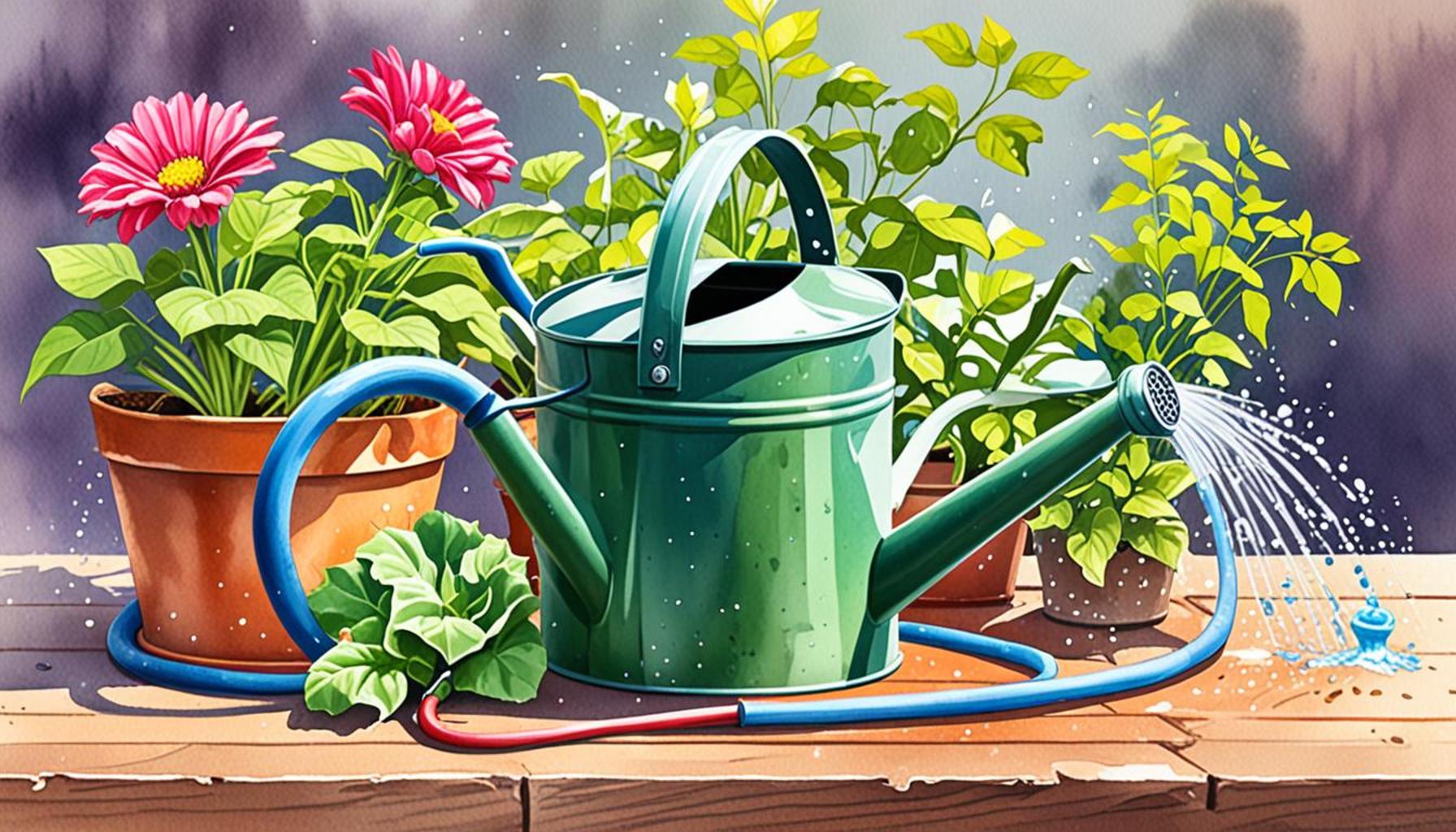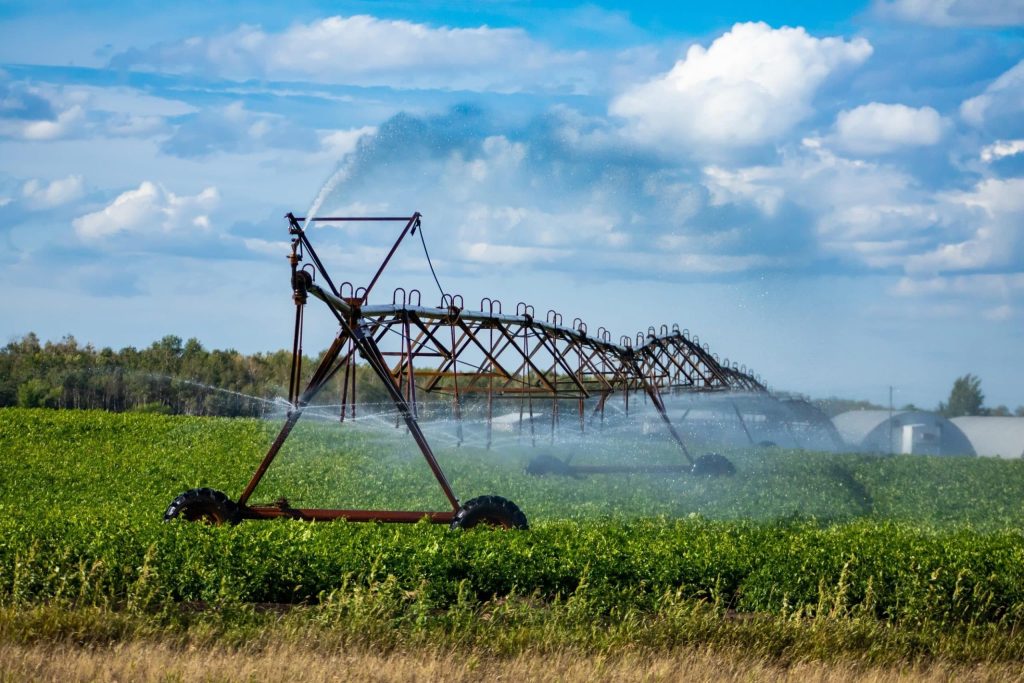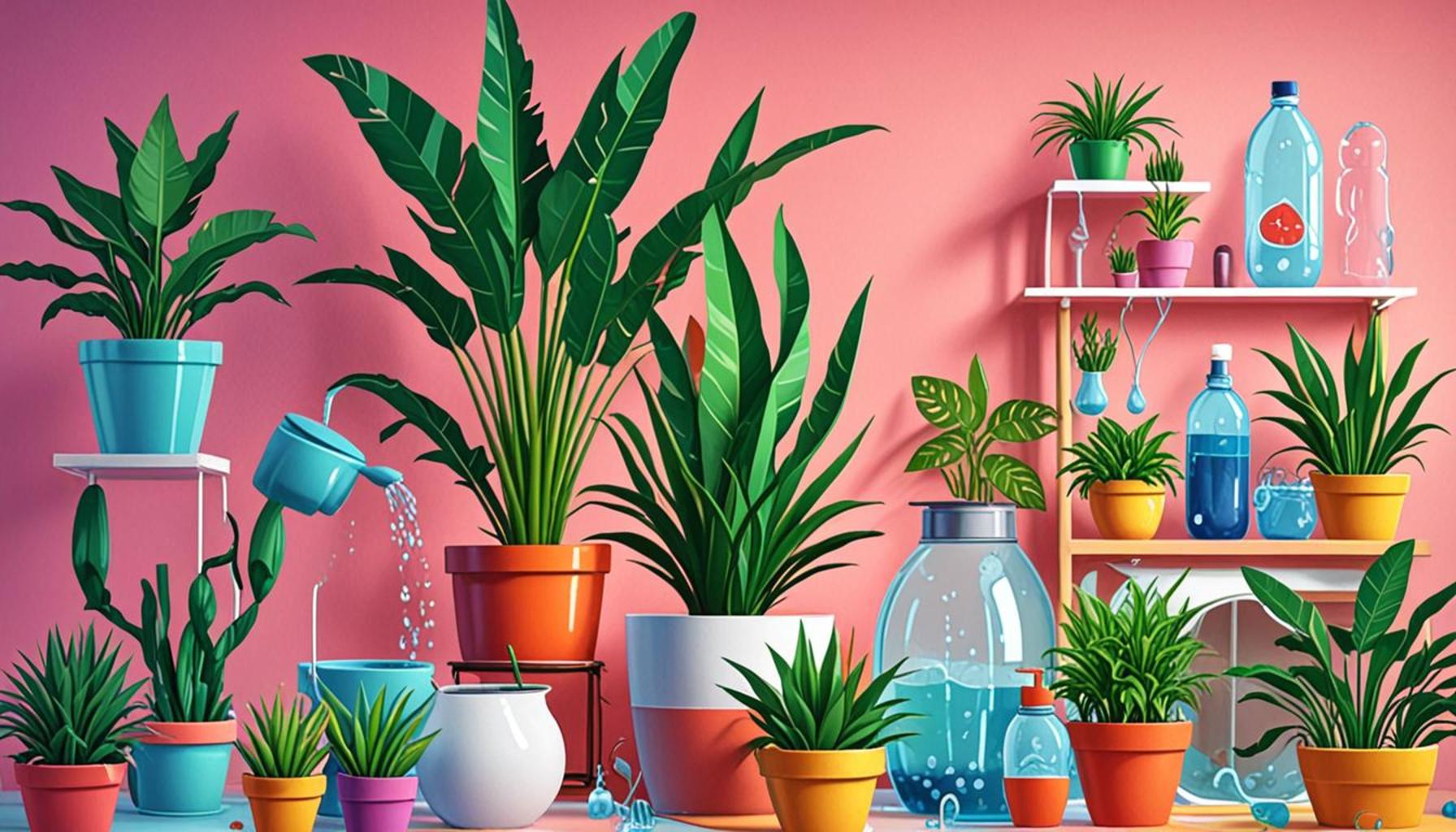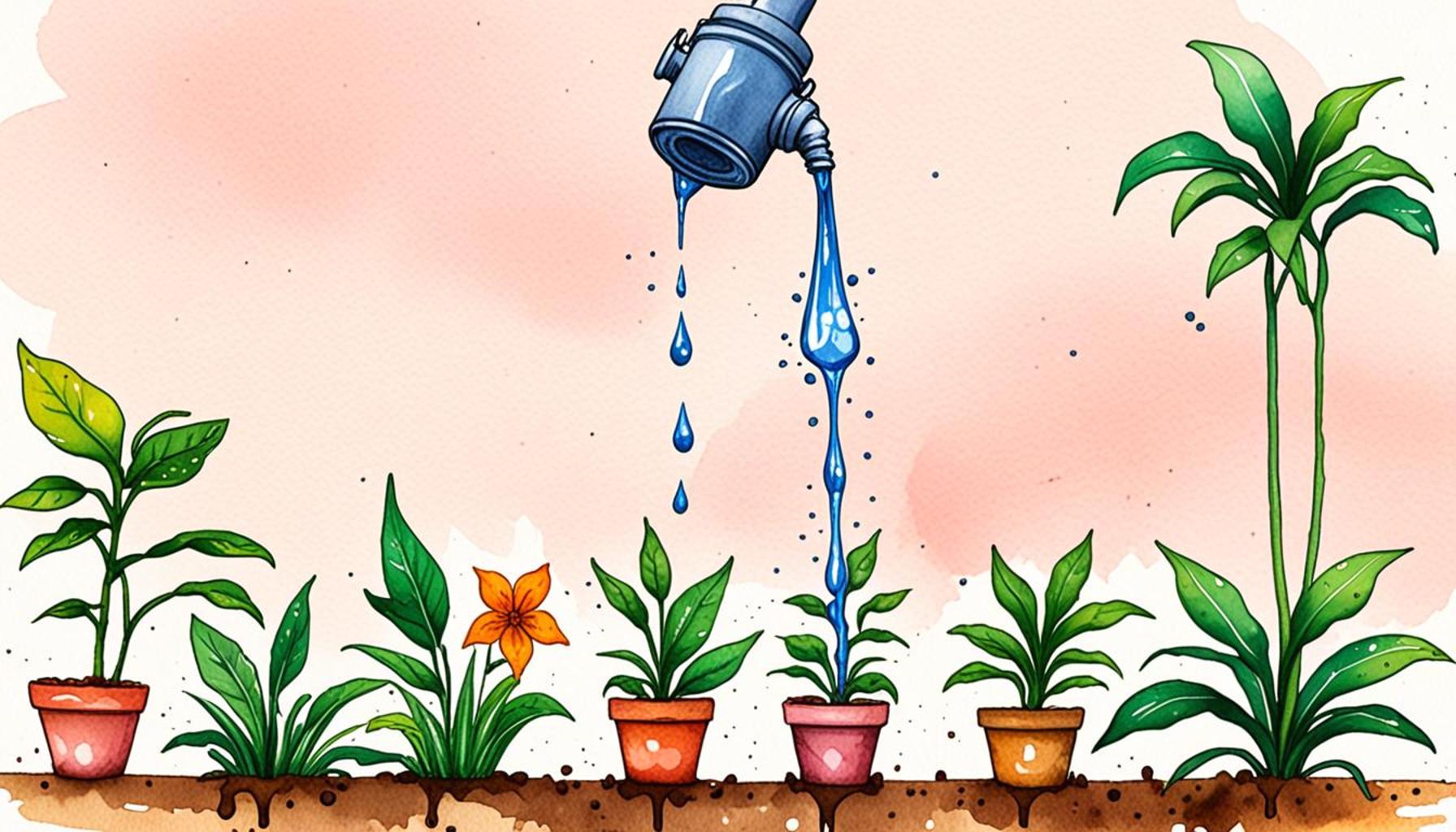Manual Irrigation Methods: How to Use Watering Cans and Hoses Efficiently

The Benefits and Techniques of Manual Irrigation
As the realm of gardening evolves with technological advancements such as smart irrigation systems and automated timers, the charm and practicality of manual irrigation methods continue to resonate with gardeners across the United States. A fundamental aspect of gardening, effective watering, remains vital for plant health, whether you are cultivating a lush backyard garden or meticulously caring for potted plants on your patio. Mastering the use of watering cans and hoses can significantly enhance your plant care routine, making it both efficient and rewarding.
First, let’s take a closer look at watering cans. These versatile tools are perfect for areas where precision is crucial. Ideal for small gardens, flower beds, and container plants, watering cans allow you to control the amount of water delivered directly to the soil. For instance, when tending to delicate seedlings or indoor plants, a watering can with a narrow spout can help prevent over-saturation and enable you to focus on the roots rather than the foliage. Additionally, many gardening enthusiasts gravitate towards watering cans because they often come in various designs and sizes, allowing for a personal touch while providing functionality.
On the other hand, hoses present a different array of advantages, especially for larger outdoor spaces. Equipped with attachments such as nozzles and sprinklers, hoses can deliver water over a broader area in a shorter amount of time. This method is particularly useful for expansive lawns or vegetable gardens, where time efficiency is paramount. Utilizing a hose can facilitate tasks like quickly hydrating entire flower beds or washing off garden tools.
The key to successful manual irrigation lies in efficiency. Understanding how to maximize water use not only nurtures plant health but also promotes sustainability. For instance, watering early in the morning or late in the afternoon reduces evaporation loss, ensuring more water reaches the roots. Additionally, employing techniques like slow and deep watering can encourage plants to develop a stronger root system, making them less susceptible to drought and heat, especially in regions like the Southwest United States where arid conditions can be challenging.

A fine balance is essential; striking the right equilibrium between overwatering and underwatering can mean the difference between a thriving garden and a struggling one. Overwatering can lead to detrimental conditions like root rot, whereas underwatering can impair your plants’ growth and yield. Observing signs of distress in plants, such as drooping leaves or discolored foliage, serves as critical feedback on your watering practices.
This exploration into the art of manual irrigation reveals that employing these tools and techniques properly can nurture lush landscapes, irrespective of the climate or conditions in your local area. As you dive deeper into gardening, consider the ways enhanced watering practices can lead to a greener thumb and abundant blossoms—preparing you to not only sustain your plants but truly flourish alongside them.
DIVE DEEPER: Click here to learn about essential tools for soil preparation
Mastering Watering Cans: Precision in Plant Care
To truly master manual irrigation methods, becoming proficient in the use of watering cans is paramount. These tools not only promote careful water distribution but also cultivate a connection between the gardener and the plants. An important aspect to consider when choosing a watering can is its size and design; larger cans can hold more water but may be cumbersome to maneuver, while smaller ones allow for easy handling and control.
When utilizing watering cans, it is essential to adopt a few effective practices:
- Watering technique: Always water at the base of the plant to ensure the roots receive the necessary moisture. A gentle pour minimizes the risk of harming delicate leaves and flowers.
- Regular refill: Instead of filling your can to the brim, consider smaller, manageable amounts. This helps maintain control over the flow and reduces spills, ensuring every drop counts.
- Spout selection: Using a watering can with a long, narrow spout provides the precision needed for potted plants or seedlings, whereas a wider spout is better suited for larger garden beds.
Additionally, many gardeners enrich their watering can experience by investing in ergonomic designs that reduce strain during prolonged use. This practicality promotes sustainable gardening habits, allowing for thorough irrigation sessions without the toll on your body. When watering, consider incorporating a rainwater collection system or using a compost tea mixture for added nutrients, thereby enhancing plant health while conserving resources.
Efficient Outdoor Watering: Harnessing the Power of Hoses
When it comes to larger spaces, hoses become indispensable allies in manual irrigation. They offer versatility and efficiency, making them an excellent choice for those who manage expansive gardens or lawns. Understanding the various attachments available can further increase efficiency; nozzles, sprinklers, and soaker hoses allow for a customized watering experience that meets the specific needs of different plants.
For those new to using hoses, here are some best practices to consider:
- Use a nozzle: A hose nozzle can help control water pressure and spray patterns, making it easier to deliver water gently and efficiently. Options range from mist to jet settings, aiding in both delicate and robust watering needs.
- Positioning: Ensure that you position the hose so that it directs water directly at the plants without wetting unwanted areas, such as pathways or hardscapes. This approach minimizes water waste and maximizes efficiency.
- Soaker hoses: For a slower, more efficient irrigation process, consider using soaker hoses that distribute water evenly over a longer period. They are ideal for vegetable gardens and flower beds, providing constant moisture at the root level.
Moreover, timing your hose irrigation can drastically improve results. Watering during cooler parts of the day, either early in the morning or late in the evening, reduces evaporation and ensures more water penetrates the soil, reaching the roots effectively.
By understanding the intricacies of both watering cans and hoses, gardeners can not only enhance their plant care practices but also contribute to a more sustainable approach to gardening. Whether you’re nurturing a single potted plant or managing a whole garden, mastering these tools and techniques can pave the way for deeper connections with your plants and more fruitful harvests.
| Advantages | Details |
|---|---|
| Water Conservation | By using watering cans, you can control the amount of water used, reducing wastage. |
| Precision Application | Watering cans allow for targeted watering, making them ideal for delicate seedlings and specific plants. |
| Easier Maneuverability | Lightweight and portable, watering cans can navigate tight spaces with ease, unlike hoses. |
| Less Damage to Soil | Gentle watering from a can minimizes soil erosion, preserving structure and nutrients. |
When it comes to efficient watering techniques for your garden or lawn, the use of both watering cans and hoses plays a pivotal role. Understanding the unique advantages of each method can significantly bolster your irrigation efforts. Watering cans are particularly beneficial for smaller areas, enabling precise applications directly to the root zone of your plants. The fitness of this manual method also means you’re less likely to overwater, preserving precious resources. Hoses, on the other hand, offer a quick solution for large spaces. When equipped with adjustable nozzles, they can provide a variety of spray patterns, enhancing flexibility in water delivery. Learning to combine these methods can maximize efficiency and maintain the health of your plants. Understanding how to effectively operate these tools goes a long way in creating an environmentally-friendly garden.
DISCOVER MORE: Click here to learn about essential tools for soil preparation
Exploring Sustainable Practices: Maximizing Efficiency in Manual Irrigation
As gardening enthusiasts strive for greener practices, integrating sustainable methods into manual irrigation can yield significant benefits. Understanding the local climate and tailoring your irrigation practices accordingly is paramount in ensuring that your watering methods are effective while also conserving water resources.
One innovative approach that has gained traction in recent years is the use of rain barrels. These systems collect rainwater from rooftops, allowing gardeners to capitalize on a natural resource. By utilizing a watering can or hose connected to a rain barrel, you not only reduce groundwater consumption but also provide plants with chemical-free water that is rich in nutrients. Research indicates that using harvested rainwater can decrease municipal water expenses by up to 50%, making it a win-win for both the environment and budget-conscious gardeners.
Moreover, it’s essential to recognize the significance of soil health when it comes to efficient watering practices. Healthy soil with an optimal mixture of organic matter improves water retention, allowing gardens to thrive even during dry spells. Regularly adding compost and mulch not only nourishes the soil but also creates a protective layer that reduces evaporation. This means that when you do use your watering can or hose, the water is used more effectively, reaching plant roots where it is needed most.
Understanding the hydrological cycle in your area can inform the best times for watering, a technique known as strategic irrigation. For instance, irrigating during wet seasons may require adjustments, as soil moisture levels may already support plant growth. Conversely, in the arid months of summer, it is vital to adopt a watering schedule that accommodates the heat and prevents rapid evaporation. Using a soaker hose in conjunction with a timer can automate this process, ensuring consistent moisture while minimizing wastage.
Consider also the potential benefits of connecting drip irrigation systems with your hoses. Drip systems deliver water directly to the root zones of plants, allowing for a more targeted and efficient approach to watering. They can be particularly effective in vegetable gardens or flowerbeds where specific plants require diverse watering amounts. Drip systems can be fashioned for any layout, making them adaptable for various garden designs and sizes.
Finally, by engaging in community resources, such as local gardening clubs or cooperative extension programs, gardeners can exchange knowledge on effective watering practices tailored to their unique climate and soil conditions. These communities can be invaluable for offering insights into new technologies and methods, fostering an environment of shared learning. Participation in such groups also encourages a natural camaraderie, enhancing the gardening experience through discussions and friendly tips.
By exploring innovative methods such as rain barrel systems, improving soil health, and incorporating targeted watering technologies, gardeners can elevate their manual irrigation practices. Understanding the larger picture of how water usage impacts global ecosystems will also promote environmental stewardship, paving the way for a sustainable future in gardening.
DISCOVER MORE: Click here to learn about the importance of organic matter in soil health
Conclusion: Embracing Efficient Manual Irrigation for a Sustainable Future
In today’s environmentally conscious society, the significance of manual irrigation methods cannot be overstated. By utilizing tools like watering cans and hoses efficiently, gardeners not only nurture their plants but also contribute to water conservation efforts. As explored, integrating systems such as rain barrels and drip irrigation can revolutionize how we approach watering, allowing for the delivery of water exactly where it’s needed most, thus minimizing waste.
Furthermore, prioritizing soil health enhances the effectiveness of your watering practices, fostering a robust ecosystem in your garden. Adding organic matter like compost significantly improves water retention, allowing plants to flourish even amidst challenging weather conditions. Understanding local climatic conditions and engaging in strategic irrigation practices ensure that you are watering at the optimal times, aligning your efforts with nature’s rhythms.
Additionally, community involvement through local gardening clubs can create a forum for sharing valuable insights and modern techniques in irrigation practices. By networking with fellow gardening enthusiasts, you can gain new perspectives, discover advanced watering technologies, and participate in a collective commitment to sustainability.
In essence, adopting efficient manual irrigation practices is not only a practical approach for gardeners but also an essential step towards ensuring water conservation for future generations. As you implement these techniques, you actively participate in cultivating a greener planet, making your gardening ventures both rewarding and impactful.


